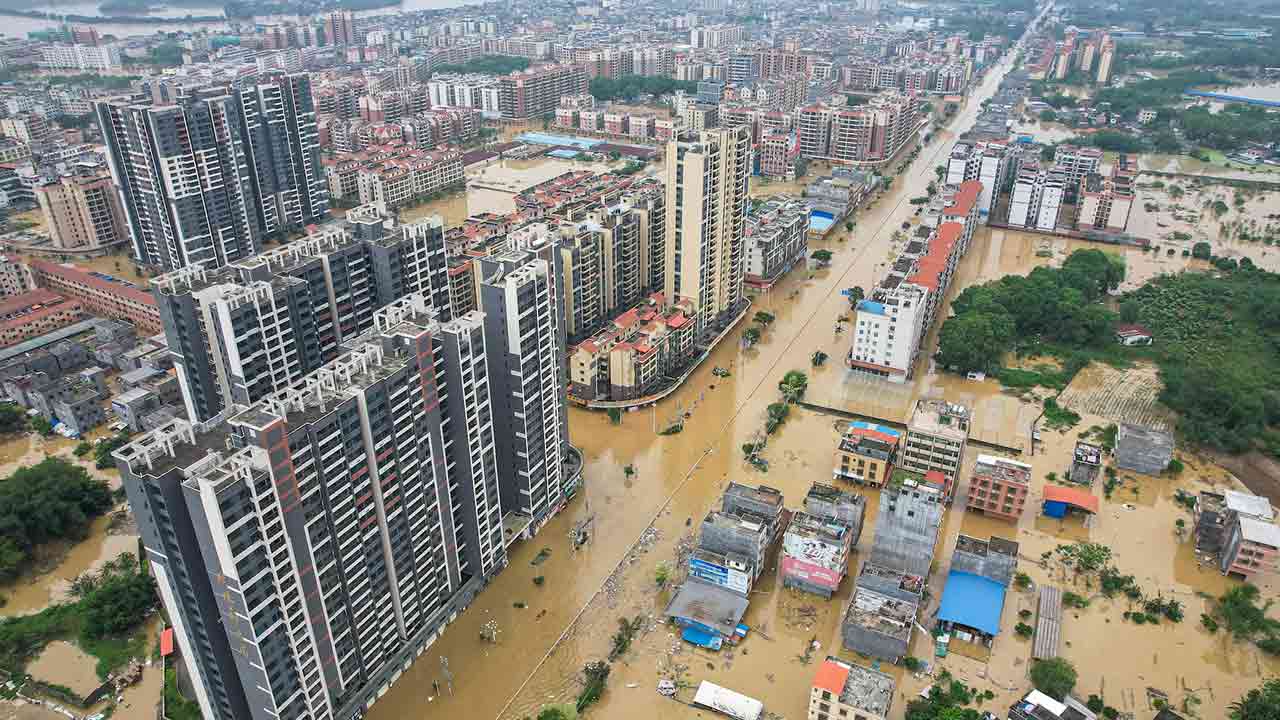Following the floods that claimed the lives of at least four individuals and displaced tens of thousands more, Guangdong Province in China persists under heavy rainfall. The primary rain bands have shifted southward towards the coast, with cities like Shenzhen, Zhuhai, Jiangmen, and Yangjiang experiencing the most intense rainfall on Tuesday morning.
In flood-affected Guangdong province, rescuers aboard boats hurried to evacuate stranded residents, assisting some elderly individuals by carrying them on their backs from their homes. Helicopters were also deployed to rescue villagers trapped in landslides.

According to the Guangzhou Meteorological Service, more than a hundred weather observation stations documented rainfall ranging from 50mm to 100mm (2-4 inches) within a span of three hours.
Previously, the most severely affected regions were in the northern part of the province, where floods and landslides displaced over 110,000 individuals along the Bei River, a tributary of the Pearl River.
Xinhua, the state news agency, reported that on Monday, the Bei River recorded its highest water levels in over 50 years, although floodwaters have begun to recede, as per information from the Guangzhou-based news site dayoo.com.
The National Meteorological Center indicated that the rainfall would diminish by Tuesday evening and Wednesday, but cautioned of additional storms later in the week, persisting until Friday.
Moreover, on Tuesday, central areas of Shenzhen, located on the border with Hong Kong, experienced the most intense rainfall, prompting city authorities to issue a red alert, the highest level in the country’s four-tier warning system.
Residents were additionally cautioned to remain vigilant regarding the potential hazards of “waterlogging, flash floods, landslides, mudslides, and other calamities that could result from heavy rainfall.”
The authorities in Guangdong province cautioned of a “significant risk of geological hazards amidst intense and recurrent rainfall.”
Furthermore, travel was significantly impacted by the severe weather, with certain rail services forced to decrease their speed during the most severe storms. Additionally, numerous flights have experienced delays at Guangzhou Baiyun International Airport, the busiest in the country, over the past few days, including at least 66 on Tuesday morning. The meteorological service in the provincial capital, Guangzhou, reported that the preceding six days witnessed the heaviest April rainfall in a decade.
Located in the densely populated Pearl River Delta, Guangdong, once known as the “factory floor of the world,” faces recurring summer floods. Over time, the province has implemented robust defenses to mitigate the disruptive impacts of flooding.
However, since last Thursday, Guangdong has been battered by unusually heavy, prolonged, and widespread rainfall. Powerful storms have ushered in an earlier-than-usual onset of the region’s annual flooding season.
Scientists attribute the intensified and unpredictable weather events in China to global warming. Record-breaking rainfall and drought have besieged the world’s second-largest economy, often occurring simultaneously.
The escalation of extreme weather events, spurred by human-generated greenhouse gas emissions and exacerbated by climate change, becomes more prevalent and severe. As the world’s largest emitter of greenhouse gases, China bears a significant responsibility.
In recent times, China has encountered severe floods, prolonged droughts, and unprecedented heatwaves. This trend has prompted authorities to respond promptly, resulting in a reduction in casualties compared to previous decades.
In September, Shenzhen encountered its most substantial rainfall on record since data collection began in 1952. Similarly, the neighboring semi-autonomous city of Hong Kong witnessed its most substantial rainfall in nearly 140 years.
According to a report released by the United Nations on Tuesday, Asia emerged as the globe’s most disaster-prone region in 2023 due to climate and weather-related hazards. Floods and storms stood out as primary contributors to casualties and economic losses.








